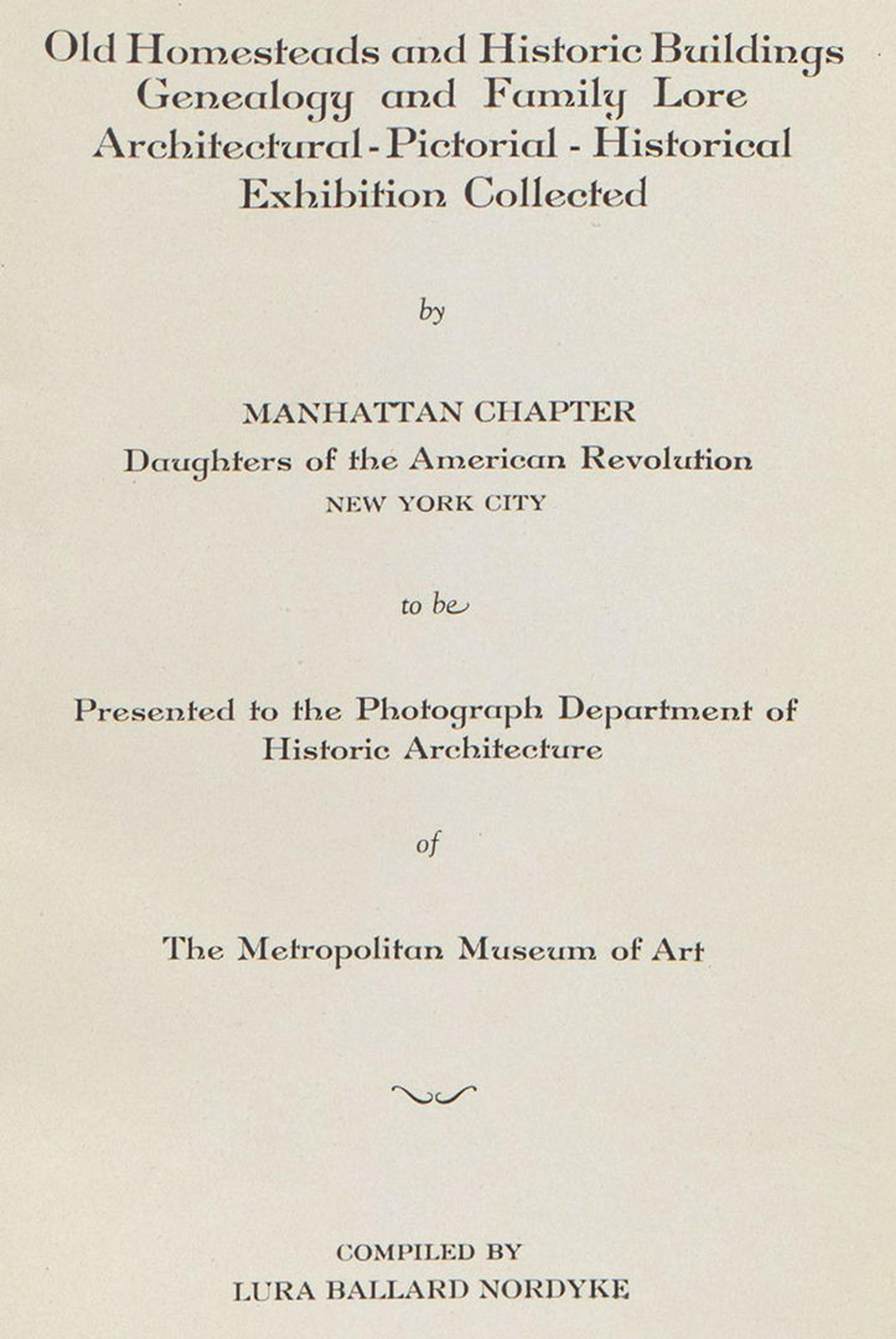Art of a Revolution
From Elisabeth Garrett Widmer's The Arts of Independence: The DAR Museum Collection (Washington, D.C.: National Society, Daughters of the American Revolution, 1985).
The Daughters of the American Revolution (DAR) celebrated their 125th anniversary in 2015. Founded on October 11, 1890, the DAR still functions today as a society to promote historic preservation, education, and patriotism. Watson Library has many interesting items pertaining not only to the American Revolution, but also to the DAR and their publications relating to the arts.
From Elisabeth Garrett Widmer's The Arts of Independence: The DAR Museum Collection (Washington, D.C.: National Society, Daughters of the American Revolution, 1985).
As a recent member of the DAR myself, I was interested to explore Watson Library's holdings by or about the society. Among them is the exhibition catalogue for The Decorative Arts in America at 1776, a bicentennial tribute to the collection of the DAR Museum. The publication includes ceramics, glass, household objects and lighting devices, pewter, silver and watches, and textiles. Check it out to learn about Masonic firing glasses, "Betty" lamps, and sugar nippers.
From Sarah Wyckoff's The Decorative Arts in America at 1776 (Washington, D.C.: National Society Daughters of the American Revolution, 1976).
Sugar nippers from Sarah Wyckoff's The Decorative Arts in America at 1776 (Washington, D.C.: National Society Daughters of the American Revolution, 1976).
Other items of note include flatware believed to have been originally owned by Alexander Hamilton—supported by the initials "A. H." inscribed on the ends of the handles—which apparently were then given to James Madison.
From Elisabeth Garrett Widmer's The Arts of Independence: The DAR Museum Collection (Washington, D.C.: National Society, Daughters of the American Revolution, 1985).
The Arts of Independence: The DAR Museum Collection provides a comprehensive introduction to the DAR Museum. Highlights of the collection are accompanied by contextual and historical information.
From Elisabeth Garrett Widmer's The Arts of Independence: The DAR Museum Collection (Washington, D.C.: National Society, Daughters of the American Revolution, 1985).
For instance, the 1783 Oxford Bible pictured above has a canvas cover made by Elizabeth Peyton Patterson. The spine cross bands are an allusion to the tooled leather bindings of the period.

From Daughters of the American Revolution, New York (City)'s Old Homesteads and Historic Buildings Genealogy and Family Lore (Parsons, Kansas, pref. 1930).
Have you ever been curious about how the White House got its name? Find out in Old Homesteads and Historic Buildings Genealogy and Family Lore, produced by the Manhattan Chapter of the DAR in 1930. This book provides not only images and architectural details of the ancestral homes of the chapter, but it also traces the rich history of those who inhabited the buildings. Discover where Edgar Allen Poe read "The Raven" aloud, where George Washington and Martha Custis were married, and where John D. Rockefeller spent much of his childhood.
Watson also owns an 1896 publication by the DAR on the history of the American flag, a 1940 exhibition catalogue on Minnesotan Indian Art from the Minnesota chapter of the DAR, and the intriguing Art and the Color Line: An Appeal Made May 31, 1939, to the President General of the Daughters of The American Revolution to Modify Their Rules So As to Permit Distinguished Negro Artists Such as Miss Marian Anderson to Be Heard in Constitution Hall.
These and other resources in the Museum Libraries' collection highlight the DAR's role in promoting and celebrating the arts of all Americans since the American Revolution. I look forward to exploring more of these resources and the art of the Revolution found in Watson Library as I become more involved with my local chapter. You never know what you'll find in the stacks!
Annalise Welte
Annalise Welte is a former senior library associate in the Thomas J. Watson Library.